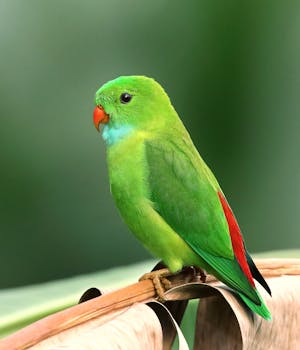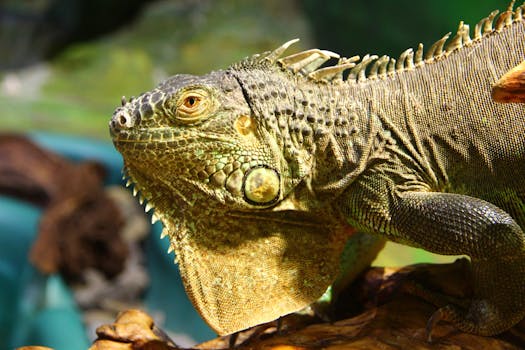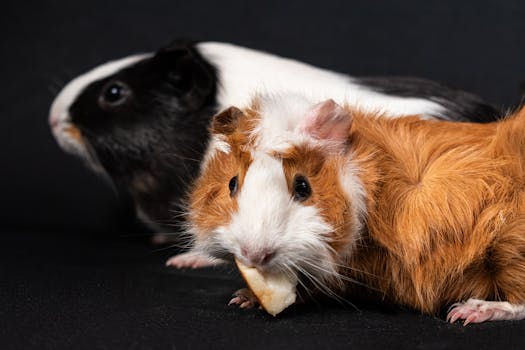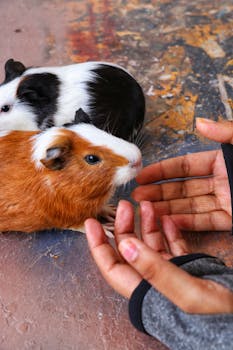What Snakes Make Good Pets?
What Snakes Make Good Pets: Your Ultimate Guide to Choosing a Slithering Companion
Slither Into Pet Ownership: Discover the Best Snakes for Your Home
Looking for a unique pet? Learn about the best snakes that make good pets, their care needs, and which species are beginner-friendly.
what-snakes-make-good-pets
Curious about owning a snake? Discover which snakes make good pets, their care requirements, and why these reptiles are the perfect low-maintenance companions.
The Appeal of Snake Ownership: Why a Slithering Friend?
When you think of pets, dogs or cats probably come to mind. But have you ever considered a snake? Sure, they don’t wag their tails or purr, but snakes can be fascinating, low-maintenance companions that are surprisingly rewarding to care for. If you've ever asked yourself, "What snakes make good pets?" you’re not alone.
Snake ownership has steadily slithered into popularity. These reptiles require less attention, have minimal grooming needs, and don’t demand a lot of space. Plus, they come in a wide variety of shapes, colors, and sizes, making them great for both beginner and seasoned pet owners.
But what makes certain snakes better suited for pets than others? Let’s dive in and find out what species could be your next cold-blooded companion.
What Snakes Make Good Pets for Beginners?
1. Corn Snakes: The All-Time Favorite
Corn snakes top the list of best pet snakes for a reason. They're gentle, easy to care for, and don’t get too big, typically maxing out at around 4-6 feet. Their docile nature makes them an excellent choice for first-time snake owners. Corn snakes are also known for their vibrant colors and patterns, ranging from bright oranges and reds to more muted shades, which adds to their appeal.
One thing you’ll love about corn snakes is their manageable care routine. They're not picky eaters, readily accepting frozen-thawed mice, and they don’t require high-humidity environments, making their tank setup relatively simple. A 20-gallon tank is usually enough to house an adult corn snake comfortably.
Pro Tip: Corn snakes are excellent escape artists. Make sure your tank has a secure lid to prevent any adventurous slithering out into your home.
2. Ball Pythons: The Cuddly Snake
Ball pythons are affectionately known as the “puppy dogs” of the snake world. Despite their fearsome reputation, these snakes are incredibly gentle and shy. Ball pythons get their name because, when they feel threatened, they curl up into a ball rather than strike. This calm demeanor makes them ideal for beginners and children alike.
While ball pythons can grow up to 5 feet long, they are still manageable in size and won’t outgrow a medium-sized tank (around 30 gallons). Their care requirements include moderate humidity levels and a good heat source, but overall, they’re relatively easy to maintain once you’ve got the basics down.
Pro Tip: Ball pythons can go weeks without eating, so don’t panic if your pet skips a meal or two. Just be sure to monitor their health during fasting periods.
Other Friendly Snake Species to Consider
3. California Kingsnakes: The Bold and Beautiful
Looking for something a bit more striking? California kingsnakes are stunningly beautiful and come in various color morphs, from jet black to striped yellow. These snakes are confident and curious but can be a bit more assertive than corn snakes or ball pythons. While they’re generally docile, they may need more handling to stay tame.
One fun fact about kingsnakes is that they’re immune to rattlesnake venom and will even eat other snakes in the wild! In captivity, they’re perfectly content with mice or small rats as their primary diet. Just be mindful to house them alone, as they’ve been known to mistake tank mates for dinner.
4. Garter Snakes: Small But Mighty
If you’re after a smaller species, garter snakes are a great option. They typically max out at around 2-3 feet in length, making them ideal for those with limited space. Garter snakes are also active during the day, so you'll see them slithering around more often than nocturnal species like ball pythons.
One unique thing about garter snakes is that they don’t exclusively eat rodents. They enjoy a varied diet, including small fish, worms, and even amphibians. This can make feeding time a little more interesting and easier for squeamish owners who aren’t too keen on handling frozen mice.
Key Considerations When Choosing a Pet Snake
5. Size Matters: Small vs. Large Snakes
While snakes like ball pythons and corn snakes are relatively small, other species, such as boa constrictors, can grow to be over 10 feet long. When choosing a pet snake, it’s essential to consider how much space you have available. Larger snakes require more substantial enclosures, and their care needs can be more demanding, so think carefully before opting for a giant!
6. Temperament: Handle with Care
Some snakes are naturally more skittish or aggressive than others. If you’re new to snake ownership, it’s best to start with a docile species like a corn snake or ball python. These snakes are easier to handle and less likely to stress out when you interact with them.
Additionally, it’s important to handle your snake regularly to keep them accustomed to human interaction. While they won’t “cuddle” like a dog, snakes can learn to recognize their owners and feel comfortable with gentle handling over time.
Snake Care 101: What You Need to Know
7. Housing: Setting Up the Perfect Habitat
Creating the right environment is crucial for keeping your pet snake healthy and happy. Most snakes need a well-ventilated tank, with temperatures maintained through a heat lamp or heating pad. Reptiles are cold-blooded, meaning they rely on external heat sources to regulate their body temperature, so make sure you provide a warm basking spot and a cooler area in their enclosure.
Additionally, consider the type of substrate you’ll use. For most species, aspen bedding or reptile carpet works well, as it’s easy to clean and doesn’t hold moisture (which can lead to scale rot).
8. Feeding Your Snake: A Simple Routine
Most snakes in captivity are fed a diet of rodents, such as mice or rats. It’s best to offer pre-killed prey to avoid injury to your snake, and most pet snakes will accept frozen-thawed food with no problem. Feeding frequency varies depending on the species and age, but on average, you’ll only need to feed your snake once a week.
Water should also be readily available. Provide a large, shallow dish in their tank that allows them to soak and stay hydrated.
FAQs About Pet Snakes
Are snakes expensive to care for?
While the initial setup for a snake (including a tank, heat source, and other accessories) can be a bit pricey, the ongoing costs are generally low. You’ll mainly need to budget for food (which is typically inexpensive) and occasional vet visits.
Do snakes recognize their owners?
Snakes don’t bond with humans in the same way as dogs or cats, but they can recognize their owners through scent and handling. With regular interaction, your snake will become more comfortable around you.
Can snakes get sick easily?
As long as you maintain proper hygiene in their tank and provide a balanced diet, most pet snakes remain healthy. However, common issues like respiratory infections or parasites can arise, so it’s essential to monitor their health and consult a vet if necessary.
Wrapping It Up: Is a Snake the Right Pet for You?
If you’re looking for a unique, low-maintenance pet, snakes are an excellent option. Their calm demeanor, simple care needs, and fascinating behaviors make them an ideal choice for animal lovers who want something different. Whether you choose a corn snake, ball python, or one of the other species mentioned, you'll find that these reptiles make surprisingly charming companions.
So, now that you know what snakes make good pets, are you ready to welcome one into your home? Do a little research, pick the species that suits your lifestyle, and enjoy the thrill of owning one of nature’s most captivating creatures.
Key Phrase: best snakes for pets
Tags: beginner pet snakes, ball pythons, snake care, pet reptiles, what snakes make good pets







